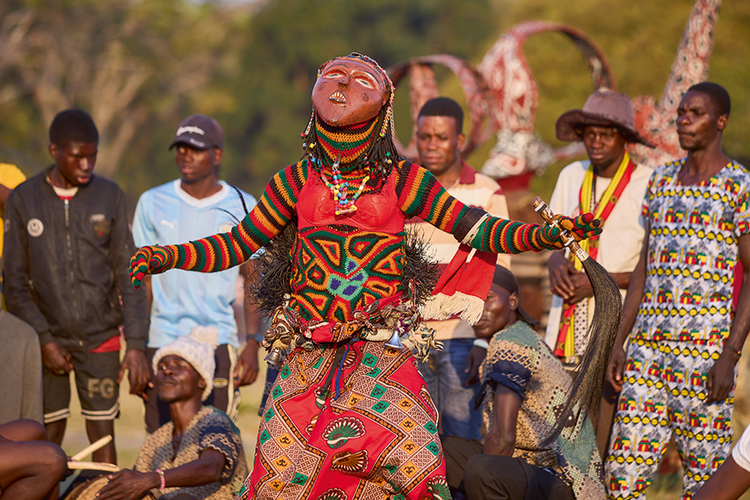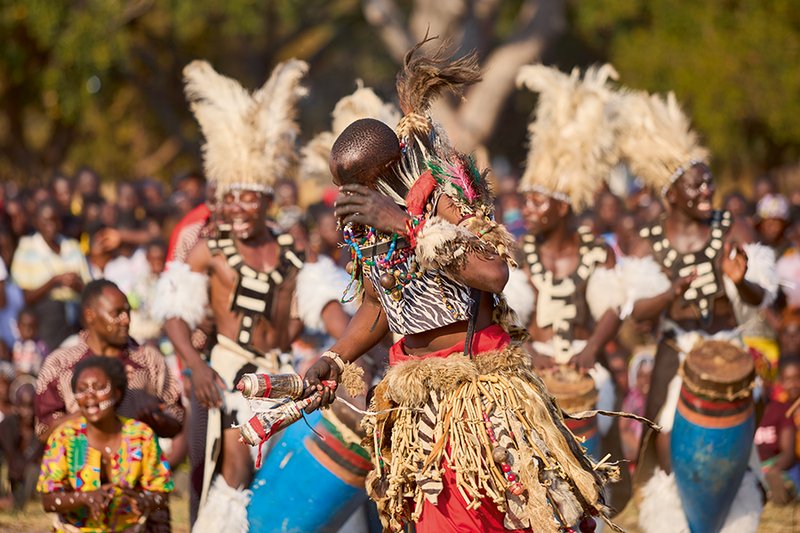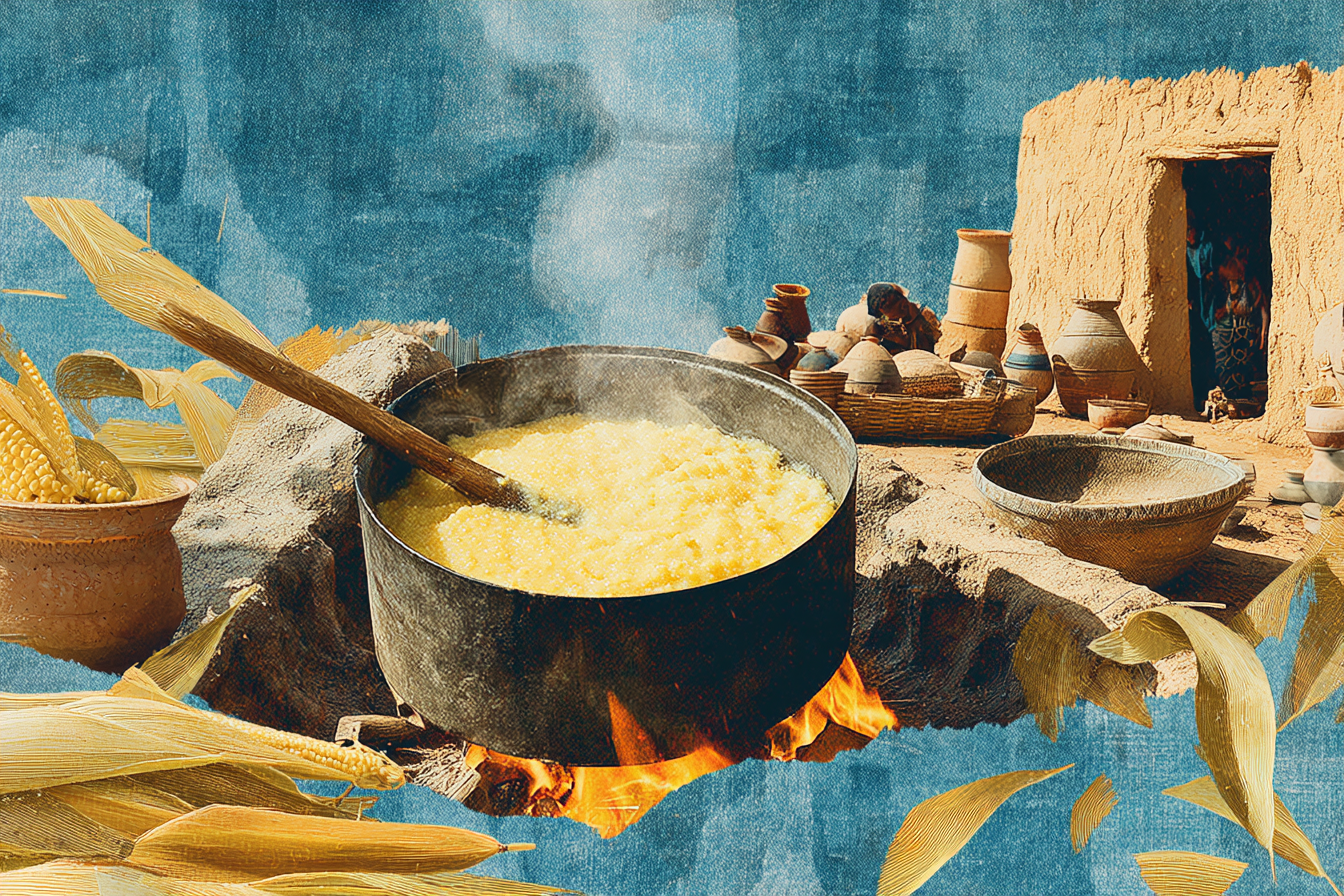As dawn breaks over the Zambezi and the early cries of a fish eagle catching its first meal of the day echo across the shimmering river, a masked figure emerges amidst a cluster of vertical stone monuments. Then another, and another, until a procession of eccentric figures silently advances from the land of the dead—the Zambezi town cemetery. More figures join the group until it swells into a throng, initially walking in solemn silence. Soon, their steps quicken, and the first shrieks escape from one of the masked figures.
The crowd, already gathered, waits for their approach. The anticipation and charged atmosphere are palpable. As the makishi advance toward the district’s CBD, the procession quickly transforms into a mob, escorted by the now frenzied townspeople. Dust hangs in the air as the sun climbs higher, relentlessly beating down on the crowd, but no one pays any mind. They chant in unison, hanga twayoya; hanga twayoya—"We are still alive, we will never die" and rightly so.


The Likumbi lya Mize ceremony dates back to the 1800s, rooted in the earliest recorded history of the Luvale people of Congo, Angola, parts of Northwestern Zambia, and northern Namibia. Recognised by UNESCO as a world heritage event, it is one of the few cultural ceremonies celebrated across generations, alongside the Kulamba ceremony of the Chewa people of Zambia and Malawi.

Likumbi lya Mize derives its name from one of the earliest capitals of the Luvale—Mize—where the palace was situated amidst a sea of grass, mize. The ceremony is the culmination of mukanda and wali, the initiation rites for boys and girls between the ages of 11 and 15. The boys are taught manhood in secluded camps, while the girls learn from the elderly women of the community in isolation.


Tundanji, the boy initiates, are presented to the public wearing kilts (jizombo) made from the bark of the Mulende tree, crafted by their vilombola (attendants). During the kulyachisa rites, the tundanji, led by sakambungu—the initiate acting as captain—don ash and their kilts, escorted by the makishi and male elders of the Luvale.
During kulyachisa, the initiates perform kuhunga—a traditional dance characterised by twisting legs and waist coordination, causing the jizombo kilts to swirl in the air.


As the makishi reach the CBD, they pause to pay their respects at the District Commissioner’s office on the eastern banks of the Zambezi before descending upon the floodplains. Each likishi represents a distinct spirit: Mwana Pwevo, the teenage girl; Ngulu, the spirit of the pig; Phombo, the baboon; and others—the dances and movements of each likishi recount unique fables or chapters from Luvale history.



Each likishi has a distinct role: Mupala, with his notable circular crown, is infamous for his aggression during circumcision, while Chikuza, identified by his long conical mitre, teaches the initiates the art of the kuhunga dance, requiring perfection of the movements. One striking performance is the dance of the River Spirit, floating on the Zambezi River. It marks the migration from the eastern to the western banks, where celebrations continue until the makishi are welcomed at the Mize capital by their king, Kayipu.


As the sun sets on the fourth day of the ceremony, the makishi retreat to their hiding places, awaiting the final Day of Mize. On this day, they are permitted to enter the capital, where the initiates, with bowed heads, are presented to the community, including HRH Senior Chief Ndungu and the President of the Republic of Zambia.


Day of Mize finally dawns, bringing a vibrant display of tradition, spirit dances, and cultural preservation before the royal palace. HRH Ndungu, accompanied by his queen, emerges from his palace for the first time since the start of the ceremony. The makishi, led by King Kayipu, pay homage to the chief. The ceremony reaches its electrifying climax with a crescendo of the national and Luvale anthems, followed by stirring speeches. Finally, the young initiates perform their rites, present cultural artefacts, and conclude with traditional sacrifices. The celebrations continue through the night, marking the end of Likumbi lya Mize.











